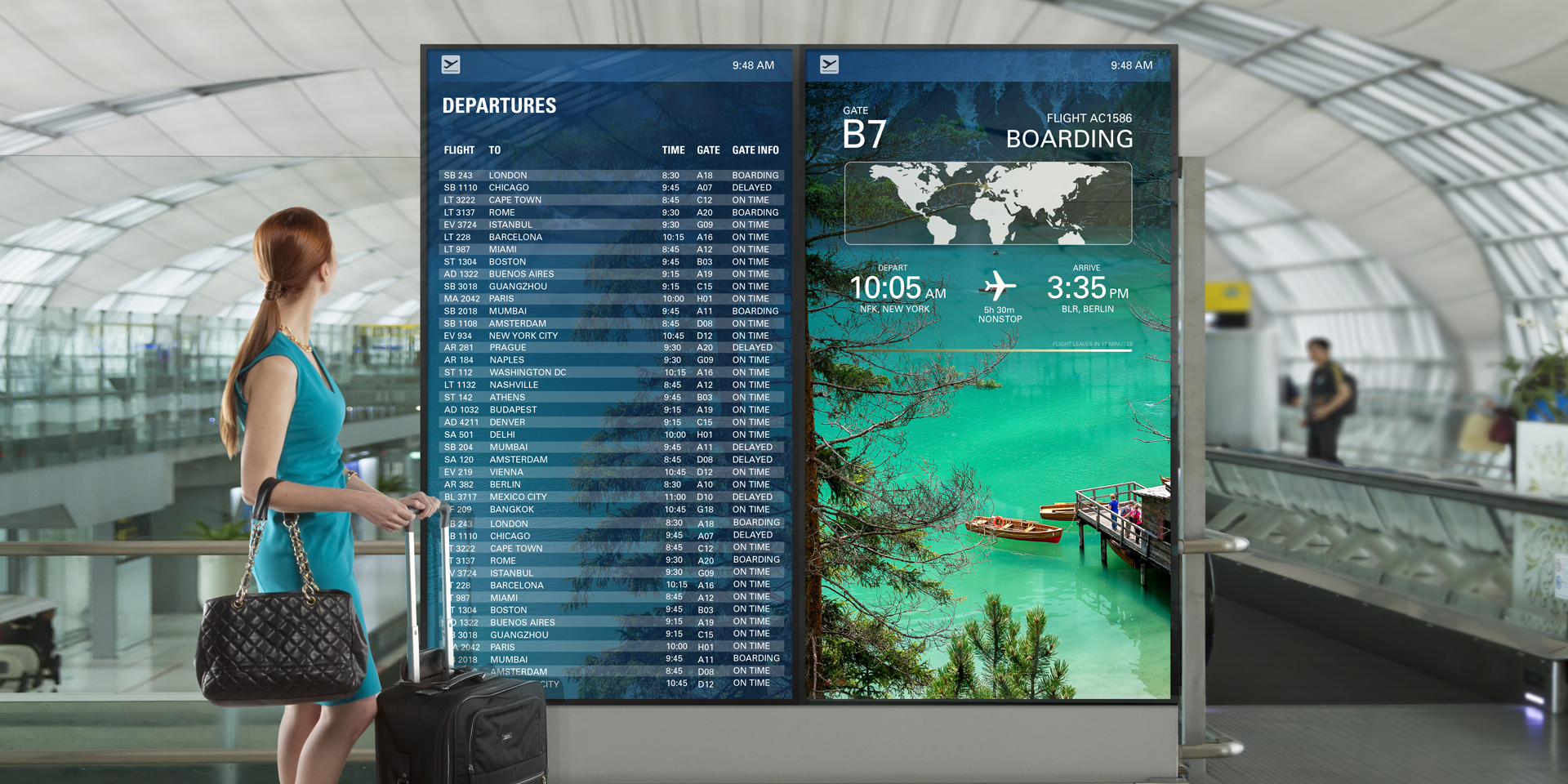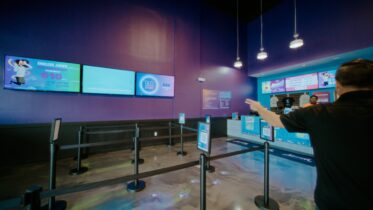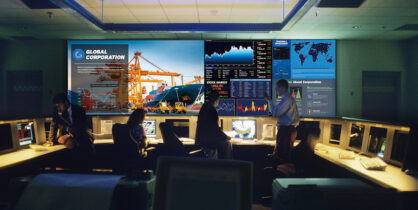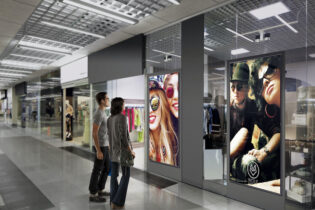Great-looking, well-positioned displays are fundamental to any digital signage network, no matter their location or purpose. But the success or failure of those displays depends on the software used to organize, distribute and monitor their content. If your content management system (CMS) is too complicated or unreliable, your digital signage network can lose effectiveness — no matter how sleek and crisp the displays.
Network operators need a tool set that allows them to update screens steadily and easily with relevant information. If the software platform is an ongoing challenge, it will likely get used less, screen content will go stale, and the intended audience will lose interest.
From disparate kits to matched sets
Digital signage networks used to depend on components from disparate companies: displays from a display manufacturer, media players from PC makers and a CMS from an independent software company.
Digital signage content management made easy
Get your complete guide to configuring and tailoring real-time messaging using an integrated CMS. Download Now
Now, network operators can get an all-in-one solution from a single vendor. The buying process is simpler, and an end user can work with a perfectly matched set. The media player, display and software are all specifically designed to work together, increasing the system’s reliability and reducing costs.
Streamlined total solution
A global market leader and innovator in digital signage solutions, Samsung upended and transformed the media player market by introducing smart signage — commercial displays with built-in media players that removed the need for external PCs.
Smart system-on-chip (SoC) displays now dominate the digital signage marketplace, and most competing manufacturers have added these all-in-one displays to their lineups. Network operators, solutions providers and end users all prefer smart displays for these benefits:
- Lower overall capital costs, with no need for PCs
- Faster installation, with only one cable
- Fewer necessary field service calls for troubleshooting (often simple issues, like loosened cables), reducing operating costs
Samsung has worked for many years with a broad spectrum of pure-play CMS software companies, as well as other software and creative firms interested in using smart displays for visual projects.
Since the mid-2000s, Samsung has also been steadily evolving, refining and enhancing its own CMS platform, MagicINFO. Started as a simple tool for small-scale, low-demand display projects, MagicINFO is now a powerful, full-featured, multimodule platform used by everyone from small business operators to multinational corporations.
It has ISO27001 and ISO27701 certifications, and it’s also the first digital signage solution to achieve both International Standard ISMS (Information Security Management System) and PIMS (Privacy Information Management System) certifications, providing the highest level of security.
Along with all the capabilities and functionality of the top independent CMS software firms, MagicINFO is also expressly designed to work with Samsung’s full smart display lineup — from LCDs and QLED flat-panel displays to highly scalable direct view LEDs. Most displays come with MagicINFO preinstalled and ready to activate.
Typically, CMS software depends on upfront and ongoing software development to ensure it works consistently and reliably with a specific media player, OS and display. But in a matched set, the media player is part of the display, and the software that comes installed with the screen is tuned and optimized for that setup. Everything works together, which minimizes the likelihood of technical issues and speeds up your return on investment (ROI).
Core elements of a digital signage CMS
There are three key elements to the Samsung MagicINFO solution:
- MagicINFO Author is the visual front end of the software, the part that’s used to create content. It comes with a large library of predesigned, business-ready templates, icons and images that make it easy for operators to develop on-screen material without needing to outsource the creative work. Author also has prescripted widgets that automate content, such as ZIP code-specific weather forecasts.
- MagicINFO Server is the command and control software used to target, schedule and push content to one, 100, 1,000 screens or more. Data tagging makes sophisticated scheduling fast and easy — even automated. MagicINFO Server also houses MagicINFO’s robust device management tools, which give users a real-time overview of the status of each device deployed in a network, as well as dozens of software tools for remote troubleshooting and fixes. Users can monitor multiple devices from a single platform. And with the enhanced, multiscreen remote control, they can manage each display right from the server. A good CMS tool set minimizes technicians’ service calls to remote sites — saving hundreds of dollars with each call avoided.
- MagicINFO Player is the playback software that drives media files to the screen. It also sends status and activity reports to Server.
MagicINFO also offers add-on modules for integrating other platforms’ data, such as business systems or audience analytics and insights. In addition, Samsung is offering businesses the W player application programming interface (API) as a way to unlock and modify web content in real time. For example, users can make changes to HTML content using the web author and API guide, or they can update external information to change certain elements, such as POS data and order confirmation displays.
The right CMS
Specific digital signage needs, like a focus on hotels or healthcare, may lead end users to niche CMS software platforms. But for most use cases, the key considerations are reliability, scalability and cost — controlled upfront and for the long haul. With Samsung’s MagicINFO solution, your digital signage network gets all of the above, right from the start.
As you design your digital signage network, make sure you’re confident configuring and tailoring real-time messaging using an integrated CMS, further explained in this free guide. And see how interactive displays can encourage engagement from passersby by allowing them greater freedom and participation in your signage solutions.








